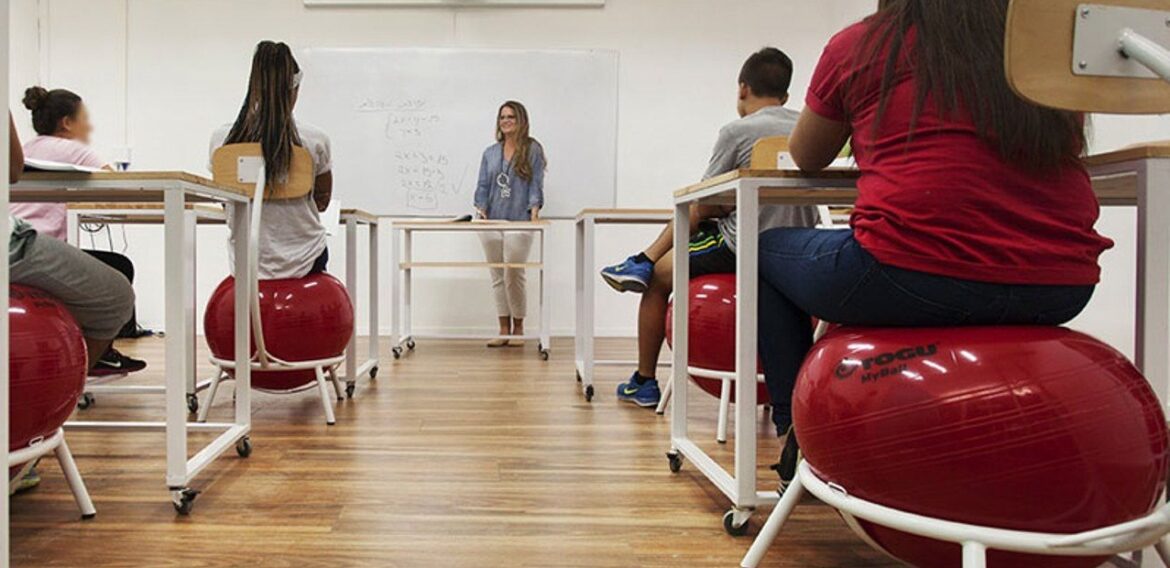Best Practices for Avoiding Plagiarism in Academic Papers
Writing an academic paper is a rewarding but challenging task, and one of the biggest challenges students face is avoiding plagiarism. Plagiarism happens when you use someone else’s words or ideas without giving them proper credit, which can lead to serious consequences.
In this blog post, we’ll discuss some of the best practices for avoiding plagiarism in academic papers, helping you stay on the right track and maintain your academic integrity. Whether you’re new to writing or just looking to improve, these tips will help you navigate the process with confidence.
Understand What Plagiarism Is
Plagiarism is when you take someone else’s work—whether it’s their ideas, words, or research—and present it as your own without giving proper credit. This can happen intentionally or unintentionally, but regardless of intent, it is considered a serious violation of academic integrity. Avoiding plagiarism is crucial in academic writing because it protects the originality of your work and respects the efforts of others.
There are several common types of plagiarism you should be aware of:
| Type of Plagiarism | Description |
|---|---|
| Direct Plagiarism | Copying text word-for-word from a source without any attribution. |
| Self-Plagiarism | Reusing your own previously submitted work without permission or citation. |
| Paraphrasing Plagiarism | Rewording someone else’s ideas too closely without giving credit. |
| Mosaic Plagiarism | Blending pieces of different sources together without proper citation. |
| Accidental Plagiarism | Failing to cite sources correctly due to lack of knowledge or careless mistakes. |
Understanding what constitutes plagiarism is the first step in avoiding it. Even unintentional plagiarism, such as forgetting to cite a source or improperly paraphrasing, can lead to severe academic consequences. Therefore, it’s essential to be vigilant throughout your writing process.
Properly Cite All Sources
One of the best practices for avoiding plagiarism in academic papers is learning how to properly cite your sources. Whenever you include ideas, quotes, data, or research from another person, you need to give them credit. This not only prevents plagiarism but also adds credibility to your work, showing that you’ve done thorough research.
Different academic fields use different citation styles. Here’s a quick overview of some of the most common ones:
| Citation Style | Used In | Example (Book Citation) |
|---|---|---|
| APA | Social sciences, education, psychology | Author, A. A. (Year). Title of work. Publisher. |
| MLA | Humanities, literature, arts | Author Last Name, First Name. Title of Book. Publisher, Year. |
| Chicago | History, fine arts | Author Last Name, First Name. Title of Book. Place of Publication: Publisher, Year. |
When you’re working on a research paper, it’s important to use the correct citation style based on your academic field. Keeping track of your sources as you go is essential—many people accidentally commit plagiarism because they forget to cite a source they used earlier.
Tips for Proper Citation:
- Use citation management tools: Tools like Zotero or EndNote help organize your sources and automatically format citations.
- Check citation guidelines: Always double-check the guidelines for the citation style you’re using.
- Cite as you write: Don’t wait until the end to add citations. Insert them as you include information from a source.
By ensuring that all sources are cited properly, you protect yourself from plagiarism and improve the quality of your work.
Paraphrase Carefully
Paraphrasing is a key strategy for avoiding plagiarism in academic writing. However, paraphrasing requires more than just changing a few words in a sentence. To paraphrase effectively, you need to fully understand the original source and rewrite it in your own words while maintaining the original meaning. Proper paraphrasing shows that you comprehend the material, which can strengthen your paper.
Here’s a simple guide to paraphrasing without plagiarizing:
| Steps for Effective Paraphrasing | Details |
|---|---|
| Read the original text thoroughly | Understand the message and key points before attempting to rewrite it. |
| Write in your own words | Avoid copying sentence structures; instead, explain the ideas in a way that feels natural to you. |
| Compare with the original | After writing, check your version against the original to ensure you’re not too close to it. |
| Cite the source | Even if you paraphrase, you must give credit to the original author. |
Here’s an example of how to paraphrase correctly:
- Original text: “Plagiarism is an academic offense that can lead to severe consequences, including suspension or expulsion.”
- Incorrect paraphrase: “Plagiarism is a scholarly crime that can result in serious consequences, like being suspended or expelled.”
- Correct paraphrase: “Engaging in plagiarism can result in significant academic penalties, such as being suspended or even expelled.”
Using plagiarism detection tools like Turnitin or Grammarly can also help identify areas where your paraphrasing may be too close to the original text. These tools compare your work to a vast database of sources and help highlight any potential issues.
By mastering the art of paraphrasing and citing correctly, you can confidently write academic papers without the risk of plagiarism.
Use Plagiarism Detection Tools
One of the most effective ways to ensure your academic paper is free of plagiarism is by using plagiarism detection tools. These tools compare your work against an extensive database of academic papers, articles, and websites to identify any similarities. Plagiarism checkers are a great way to catch unintentional plagiarism and ensure your writing is original.
Here are some popular plagiarism detection tools:
| Plagiarism Tool | Description |
|---|---|
| Turnitin | Widely used in academic institutions, Turnitin checks your paper against a large database of academic content. |
| Grammarly | In addition to grammar checks, Grammarly also offers plagiarism detection, comparing your work to millions of online sources. |
| Quetext | A free and user-friendly tool that checks for plagiarism and offers suggestions for proper citation. |
| Copyscape | Originally designed for web content, Copyscape also checks for plagiarism in academic work. |
When to Use Plagiarism Detection Tools:
- Before final submission: Running your paper through a plagiarism checker before submitting it helps you catch any accidental similarities with existing content.
- After paraphrasing or summarizing: Even when you rewrite material in your own words, it’s useful to double-check for unintentional plagiarism.
- To ensure proper citation: These tools often highlight passages that may require citation, allowing you to fix any missing references.
Using plagiarism detection tools is a simple yet powerful way to protect yourself from academic misconduct. It’s like having a safety net to ensure your paper maintains academic integrity.
Manage Your Time to Avoid Unintentional Plagiarism
Time management is an often-overlooked aspect of avoiding plagiarism. When students are pressed for time, they might rush through their writing or fail to properly attribute sources, leading to unintentional plagiarism. By managing your time effectively, you can prevent these common pitfalls and produce high-quality, original work.
Time Management Tips for Academic Writing:
- Create a writing schedule: Break down the research and writing process into manageable chunks and set deadlines for each. This reduces last-minute panic and gives you enough time to focus on proper citations.
- Organize your notes: Use a system that helps you keep track of sources as you gather information. Tools like Evernote or even a simple spreadsheet can help you keep everything organized.
- Allow time for revision: Make sure you have ample time to proofread your paper, run plagiarism checks, and refine your citations before submission.
Good time management ensures that you have the mental space and clarity to properly cite sources, paraphrase carefully, and avoid any unintentional plagiarism.
Understand the Consequences of Plagiarism
Plagiarism in academic papers carries serious consequences, both in terms of your education and your future career. Whether the plagiarism is intentional or accidental, academic institutions treat it as a violation of academic integrity.
Consequences of Plagiarism:
| Type of Consequence | Description |
|---|---|
| Academic penalties | Plagiarism can result in failing the assignment, receiving a lower grade, or even failing the course. |
| Disciplinary action | In severe cases, plagiarism may lead to suspension or expulsion from your academic institution. |
| Reputation damage | Academic plagiarism can harm your reputation and future opportunities, including scholarships or admissions to advanced programs. |
| Legal consequences | In rare cases, plagiarism can lead to legal repercussions, especially if copyrighted material is used without permission. |
Beyond these penalties, plagiarism also undermines the trust between you and your professors, colleagues, and peers. It can have long-term effects on your academic and professional career. This is why avoiding plagiarism is so important. Practicing academic honesty not only helps you steer clear of consequences but also strengthens your skills as a writer and researcher.
By understanding the gravity of plagiarism and actively avoiding it through best practices like citation and paraphrasing, you safeguard your academic future and maintain a good reputation in your field.
Conclusion
Avoiding plagiarism is essential for maintaining academic integrity and producing high-quality work that reflects your true abilities. By following these best practices, you can ensure that your academic papers are original, properly cited, and free from plagiarism. Whether you’re a student just starting out or an experienced writer, these strategies will help you stay on track and avoid the pitfalls of plagiarism.
To recap:
- Understand what plagiarism is—know the different forms it can take.
- Properly cite all sources—using the correct citation style for your field.
- Paraphrase carefully—express ideas in your own words while still giving credit.
- Use plagiarism detection tools—double-check your work for any unintentional similarities.
- Manage your time—so you’re not rushed into making careless mistakes.
- Understand the consequences—which can be severe, ranging from academic penalties to damage to your reputation.
The best way to avoid plagiarism is to develop good research and writing habits from the start. Stay organized, give credit where it’s due, and always take time to review your work. By practicing these techniques, you’ll not only avoid plagiarism but also become a stronger, more confident academic writer.






